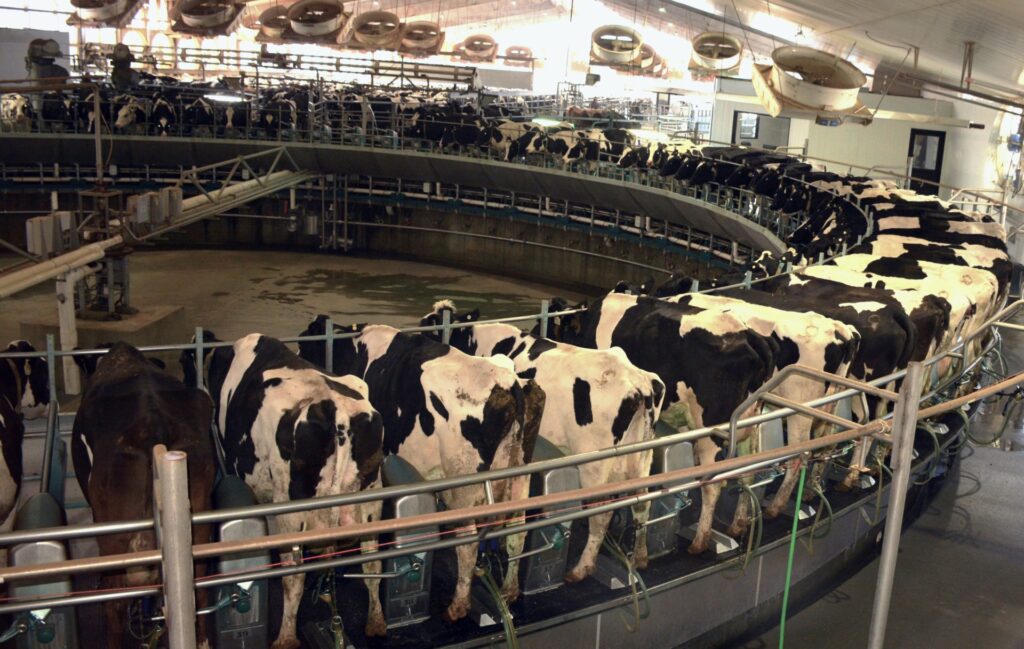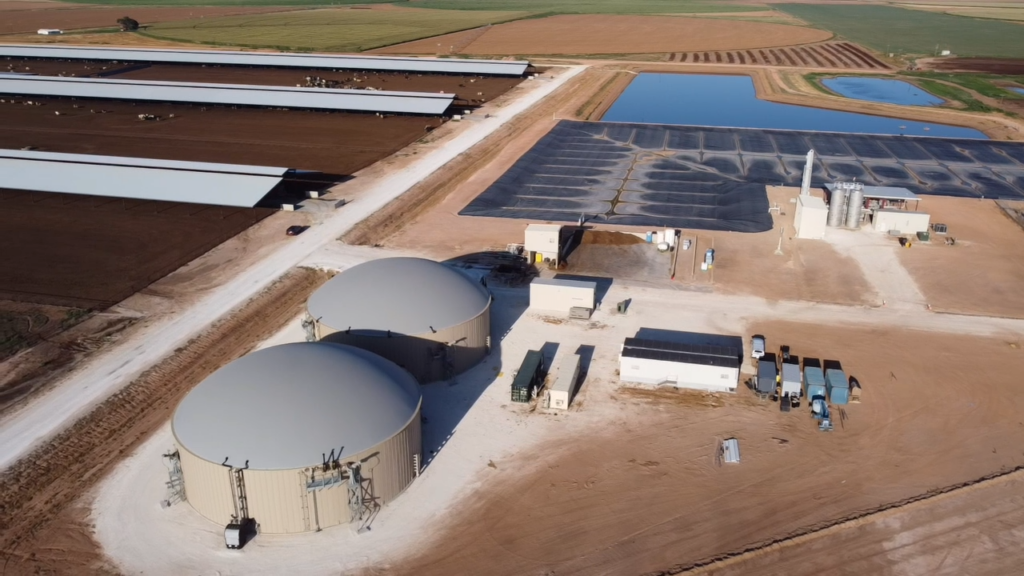Technology advances attract dairy producers from two states to Southwest Dairy Day
AgriLife Extension hosts producers, vendors at Del Rio Dairy showcase of time, labor, money savers
The Texas A&M AgriLife Extension Service’s 2023 Southwest Dairy Day drew dairy producers from a two-state area to view cutting-edge technology, including an anaerobic digester and rotary parlor with automated sanitation capabilities.

Dairy producers are looking for automation and precision technologies that will help them further their revenue streams and increase the efficiency of their operations, said Juan Piñeiro, DVM, Ph.D., AgriLife Extension dairy specialist and assistant professor in the Texas A&M College of Agriculture and Life Sciences Department of Animal Science, Amarillo.
Piñeiro estimated roughly 400 people from Texas and New Mexico attended the event.
“Dairy farmers, allied industry professionals and people from local communities who participated mentioned they were very happy with the event and getting to tour a high-tech farm like Del Rio Dairy,” he said.
One attendee was Frans Osinga from Proctor, who runs a 1,500-cow dairy. He came to see the anaerobic digester, which turns dairy manure into high-quality fertilizer, as well as other technologies that the vendors were featuring that he can implement on his operation.
For instance, he said the wide variety of sensors now available to be placed on cows are expected to save time and money. The sensors can show him at the touch of a button on his phone the animal’s temperature for breeding, rumination and signs of sickness. This saves labor, antibiotics and hormone use.
“These technologies allow the cow to stay in the pen and not be stressed by moving them to a sick pen – essentially we give them two aspirin and a bolus, and they never leave the pen,” Osinga said. “It’s a lot less stressful for our cows.”
Precision technology and automation
Sushil Paudyal, Ph.D., assistant professor in dairy science in the Department of Animal Science, Bryan-College Station, helped discuss the precision technologies and automation for attendees.
Some of the technology included activity monitoring systems for cows, automatic pre- and post-teat dipping systems and automated cow sorting systems.
“As these new technologies are becoming more and more available to dairy producers, it is crucial to evaluate if a given technology is truly a good fit for the particular farm and what benefits they hope it will provide to their operation,” Paudyal said.
Paudyal said return on investment from these systems largely depends on how fully the producer can utilize the capabilities of the technology and leverage the data generated to inform management decisions.
“While the systems offer cutting-edge technology, simply implementing them will not guarantee improvements — they must be carefully integrated into day-to-day farm management and farms should be eager to use the data for management decisions,” he said.
Anaerobic digester technology
A specific technology many of the dairy operators came to see was the anaerobic digester on the premises.

Zong Liu, Ph.D., AgriLife Extension specialist and assistant professor in the Department of Biological and Agricultural Engineering, Bryan-College Station, said participants had questions about selling the biogas that is produced as a part of the digester process and finding out about the economics of the operation.
“What participants learned and were mostly intrigued about was that biogas sales value has greatly increased over general natural gas’ price, mainly due to its trading value in reducing greenhouse gas emissions,” Liu said. “By selling biogas to energy companies, anaerobic digestors on dairies can potentially create substantial revenue.”
Liu said the anaerobic digestor technology can help producers and stakeholders find common ground in economic growth and the stewardship of land and water.
“Anaerobic digesters harness the natural process of decomposition,” he said. “Greenhouse gases emitted by manure are harvested for methane-rich biogas via anaerobic digesters. It also has been shown as an effective manure management strategy to reduce pathogens and the odor of manure.”
The post-digestion effluent is a valuable fertilizer to support crop production as well, Liu said. The digestion process conserves total nitrogen and total phosphorus, while making these nutrients more readily available for crop use.


